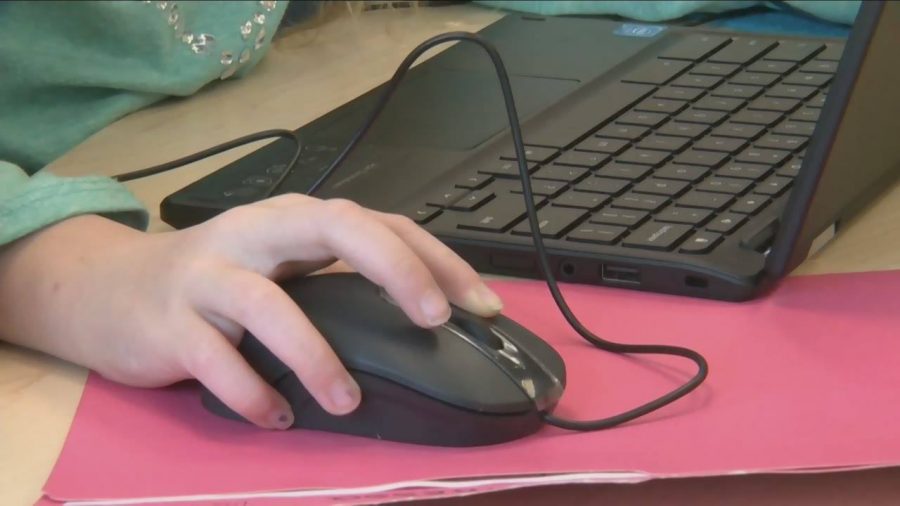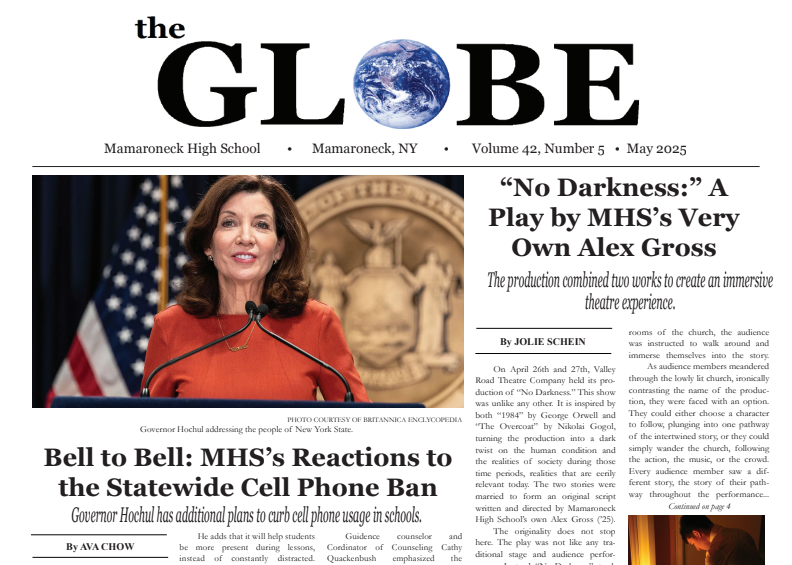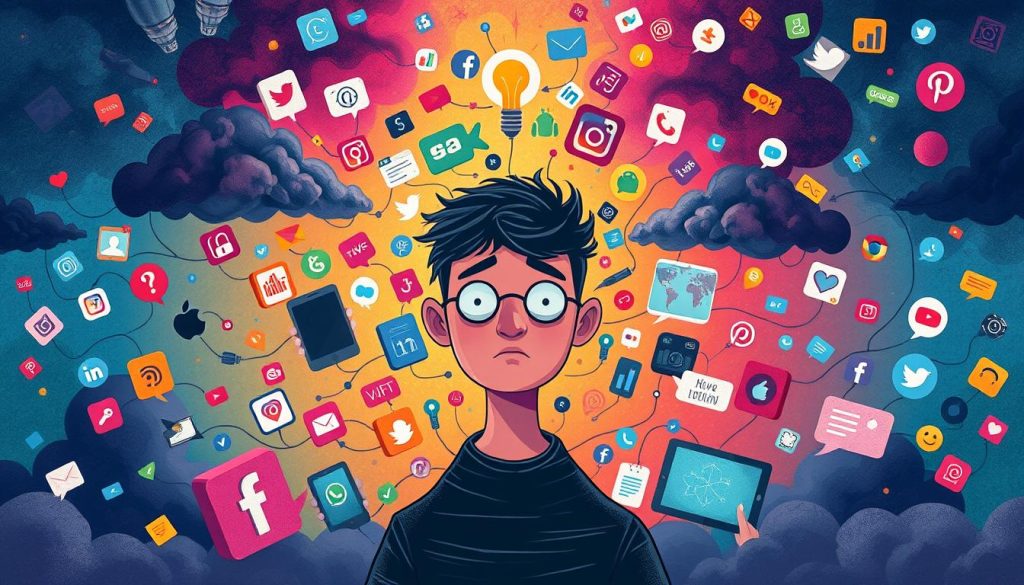Is Hybrid Learning Good for Students?
Photo Courtesy of @CTVbarrie on Facebook
A student completes their schoolwork online while working from home.
March 15, 2021
On the other side of this education debate is the hybrid learners. When starting off the discussion with the hybrid learners, they were asked why they chose hybrid education over remote education. Two main reasons dominated the Globe Staff’s responses: it creates a feeling of normalcy and the quality of education is better. With these two answers in mind, students responded to more questions about their home life, the difficulties of hybrid learning, and the disconnect they feel with the remote learners.
Opting to be hybrid was not just influenced by the feeling of normalcy or quality of education; the student’s families played an important role in helping them choose hybrid over remote. One student said that “we [Mamaroneck students] have the privilege of physically attending school, unlike other public school’s, so my parents felt like students need to take advantage of that.” Another Globe Staff member mentioned that, because of the coronavirus, their parents are working from home now. The constant noise from meetings and zoom calls is distracting to students, so school is easier and better for their education. Although some parents felt that going to school outweighs the potential of their child catching the coronavirus, many parents are skeptical of hybrid learning. As a result, some Globe members have transitions from hybrid learning, to remote learning, and back to hybrid learning when they feel the school is safe to return.
For students who chose hybrid learning, they feel that the education quality is much better, but there are still unintended difficulties that they have encountered. Whether it is returning home in time to have lunch and get ready for class or the switching AB schedule, students are still not used to this new form of school. Because of the new schedule, students have had to adapt and become more flexible, but that comes at a cost. Many freshman and sophomores do not have access/cannot drive cars, which means they have no way to get home/go to school in the middle of the day if their parents are working. For juniors and seniors as well, someone else in their family might be using the car. In regards to the AB schedule, Globe Staff members said that, when they come home from school, it is weird to start school again on Zoom after lunch. Usually when people come home from school, they relax and do homework. Now students transition from one class to another, spending most of their break time preparing for the next class. Of course, many of these hybrid students feel that difficulties with wifi and the lack of social interaction that would come from being fully remote are worse than these minute scheduling problems.
In many aspects, hybrid learning is good for students; it allows them to communicate with friends, build bonds with teachers, and have a hands-on learning experience. According to many Globe members, teachers who don’t integrate the hybrid students with the Zoom students feel that they don’t have a very good connection with their classmates. One Globe member even said that “most of the time students don’t know who is in their class if they are on Zoom.” Despite this being true, the hybrid students still get to interact with other people, something the remote students said is missing from their remote learning. This socialization with other students and teachers is important for students because it helps them make friends and foster relationships within the school. Another benefit of hybrid learning is the quality of education. Students are able to work on projects, participate in labs, study in the library with a group (socially distanced of course!), etc., something that the remote students can’t do. Although breakout rooms allow for some group learning, it is not the same because it is not as interactive. Physical group learning is good because it enables students to think critically and bounce ideas off of one another in a more natural, relaxed fashion.
As students become more accustomed to their new form of learning, the school will continue to change as vaccines get distributed. In that same sense, the school’s and students’ flexibility has allowed us to create new modes of education that are tailored to each student.






